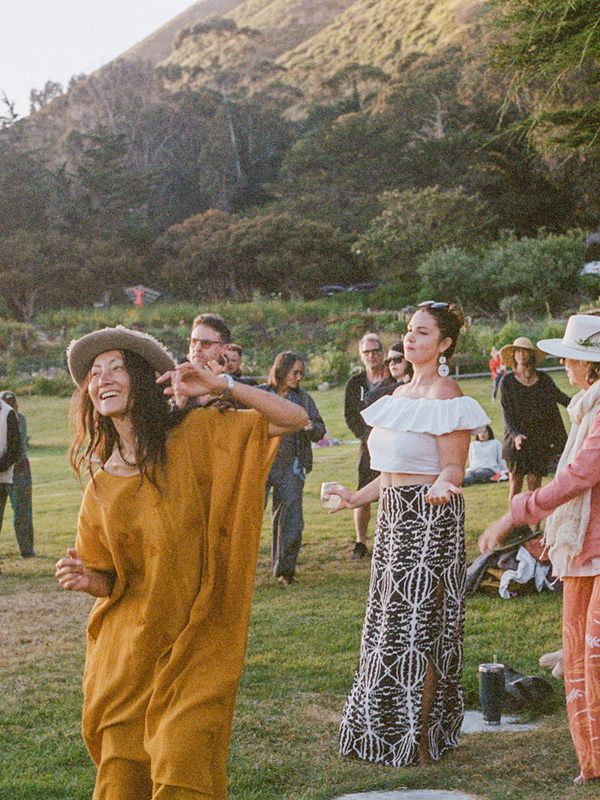Environmental Embroidery: Stitching Your World With Aaron Sanders Head




In this four-part workshop, learn how to embroider using elements of your environment as the basis for designs.
Course Description
With a simple running stitch and an observant eye, you can thread the colors and geometry that you encounter on a neighborhood walk into fabric, creating satisfying, meditative stitching patterns. In this online course, we’ll learn how to use elements of our environments as the basis for designing stitching patterns, playing with color and scale as we go. Over the course of four weeks, we’ll cover the basics of hand-stitching, trace the history of regional techniques, learn to turn sketches into geometric patterns, and finally, bring these patterns to fabric. By the end of the course, you’ll have produced a variety of stitched studies, a stitched wall hanging, and the basic skills to artfully depict your world in embroidery for yourself and to give to others.
This class is open to all levels; no prior embroidery experience is necessary.
Syllabus at a Glance
Section A
There are four total sessions included in this purchase, each lasting for 1.5 hours on four Thursdays, beginning January 28.
Session 1 (Thursday, 1/28, 7–8:30 PM ET): Global embroidery traditions
Session 2 (Thursday, 2/4, 7–8:30 PM ET): Pattern, scale, and color
Session 3 (Thursday, 2/11, 7–8:30 PM ET): From sketching to stitching
Session 4 (Thursday, 2/18, 7–8:30 PM ET): Show and tell
Section B
There are four total sessions included in this purchase, each lasting for 1.5 hours on four Thursdays, beginning March 4.
Session 1 (Thursday, 3/4, 7–8:30 PM ET): Global embroidery traditions
Session 2 (Thursday, 3/11, 7–8:30 PM ET): Pattern, scale, and color
Session 3 (Thursday, 3/18, 7–8:30 PM ET): From sketching to stitching
Session 4 (Thursday, 3/25, 7–8:30 PM ET): Show and tell
Between Sessions
Students will be given weekly homework assignments related to what was covered in class, including practicing the running stitch, making a few sketches, and transferring those sketches to fabric.
Atlas Obscura Online Courses
Our online courses offer opportunities for participants to emerge with new skills, knowledge, connections, and perspectives through multi-session classes designed and taught by expert instructors. Courses can take one of two forms: Seminars are intimate, interactive classes—capped at nine to 25 students—exploring topics and crafts through discussion, workshops, assignments, and in-class activities. We also offer lecture series that can be attended live, or viewed via a recording that will be shared within 72 hours after each session airs. Class recordings for lecture series will be available with a temporary password for up to two weeks following the final session of the course.
To learn more about our current course offerings, please visit www.atlasobscura.com/online-courses.
For answers to commonly asked questions, check out our FAQ page here.
Once registered, you’ll receive a confirmation email from Eventbrite that will provide access to each class meeting. Please save the confirmation email as you’ll use it to access your course via Zoom on each scheduled date and time.


Aaron Sanders Head is a Southern textile artist focused on natural dyes and hand-stitching. Aaron explores the intersections of practices of the past with contemporary craft, and the ways that sewing and textile arts can aid in increasing diversity and representation in the creative class. He is based in Greensboro, Alabama where he lives in an 1830s home with his partner, musician Tim Higgins, and two cats, Splenda and Turnip. He maintains an active studio practice and extensive dye garden used in his work.
This is an interactive, small-group, seminar-style course that meets over Zoom. Students may be invited to participate in discussions, workshop their projects, and receive feedback from the course instructor.
In most cases, instructors will use Google Classroom to communicate with students outside of class. While students aren’t required to use Google Classroom, instructors will be using this platform to post resources, discussion questions, and assignments, when applicable.
There are 14 spots available on this experience.












